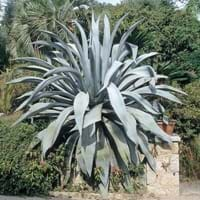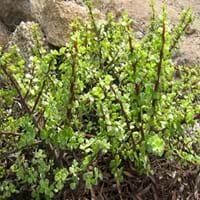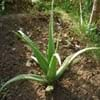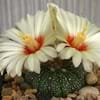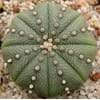Life Span
Perennial
Perennial
Type
Ornamental Plants
Succulent
Origin
Mexico
Southern Africa
Types
Not Available
Limpopo, Prostrata, Aurea, Medio Picta
Number of Varieties
Not Available
Habitat
Low annual rainfall regions, Semi desert
Dry areas, Lower slopes, Rocky areas
USDA Hardiness Zone
10-12
10-12
Sunset Zone
Not Available
8, 9, 12, 13, 14, 15, 16, 17, 18, 19, 20, 21, 22, 23, 24
Habit
Rosette/Stemless
Twisted/Contorted
Flower Color Modifier
Not Available
Not Available
Fruit Color
Non Fruiting Plant
Green, Red
Leaf Color in Spring
Blue Green
Green
Leaf Color in Summer
Blue Green
Green
Leaf Color in Fall
Blue Green
Green
Leaf Color in Winter
Blue Green
Green
Leaf Shape
Sword-like
Succulent
Plant Season
Spring, Summer, Fall, Winter
Spring, Summer, Fall, Winter
Sunlight
Full Sun
Full Sun, Partial Sun, Partial shade
Type of Soil
Loam, Sand
Loam, Sand
The pH of Soil
Neutral, Alkaline
Acidic, Neutral, Alkaline
Soil Drainage
Well drained
Well drained
Bloom Time
Indeterminate
Late Spring
Tolerances
Drought
Drought, Dry soil, Heat Tolerance
Where to Plant?
Container, Ground
Container, Ground, Pot
How to Plant?
Cuttings, Divison
Seedlings, Stem Planting
Plant Maintenance
Medium
Low
Watering Requirements
Needs small amount of water
Average Water Needs, Needs less watering
In Summer
Lots of watering
Ample Water
In Spring
Moderate
Less Watering
In Winter
Average Water
Less Watering
Soil pH
Neutral, Alkaline
Acidic, Neutral, Alkaline
Soil Type
Loam, Sand
Loam, Sand
Soil Drainage Capacity
Well drained
Well drained
Sun Exposure
Full Sun
Full Sun, Partial Sun, Partial shade
Pruning
Remove damaged leaves, Remove dead branches, Remove dead leaves
Prune if you want to improve plant shape, Remove damaged leaves, Remove dead branches, Remove dead leaves, Remove dead or diseased plant parts
Fertilizers
All-Purpose Liquid Fertilizer
All-Purpose Liquid Fertilizer, Fertilize in early spring, Fertilize late winter
Pests and Diseases
Black spots, Brown Spots, Rots, Snout weevils
Pests and diseases free
Plant Tolerance
Drought
Drought, Dry soil, Heat Tolerance
Flower Petal Number
Not Available
Single
Foliage Texture
Bold
Bold
Foliage Sheen
Matte
Matte
Attracts
Not Available
Butterflies
Allergy
Antibacterial, Anti-inflammatory
no allergic reactions
Aesthetic Uses
Wild gardens
Beautification, Bonsai, Showy Purposes
Beauty Benefits
Not Available
Good for skin, Improve skin condition, Skin cleanser, Skin inflammation, Skin irritation, Skin Problems
Edible Uses
Sometimes
Yes
Environmental Uses
Air purification
Air purification, Erosion control, Food for birds, Indoor Air Purification, Prevent Soil Erosion, Shelter for wildlife, Wildlife
Medicinal Uses
Burns, Cuts, Diarrhea, Digestion problems, Dysentry, Skin irritation
Dehydration, Diabetes, Skin Disorders, Skin irritation, Sore throat
Part of Plant Used
Leaves, Root
Leaves, Stem
Other Uses
Used for making soaps
Animal Feed, Showy Purposes, Used As Food, Used as Ornamental plant, Used for its medicinal properties, Used in salads
Used As Indoor Plant
No
Yes
Used As Outdoor Plant
Yes
Yes
Garden Design
Container, Feature Plant, Mixed Border, Rock Garden, Wall, Tropical, Wildflower
Container, Rock Garden, Wall, Tropical
Botanical Name
AGAVE gypsophila
PORTULACARIA afra
Common Name
American aloe, Century Plant, Maguey
Porkbush, Dwarf jade plant, Spekboom
In Hindi
सदी संयंत्र
Elephant Bush
In German
Jahrhundert-Anlage
Elephant Bush
In French
Century Plant
Elephant Bush
In Spanish
Planta de siglo
elefante Bush
In Greek
αιώνα φυτών
ελέφαντας Μπους
In Portuguese
Century Plant
elefante de Bush
In Polish
Century Plant
Elephant Bush
In Latin
Century Plant
bush elephant
Phylum
Magnoliophyta
Embryophyta
Class
Liliopsida
Magnoliopsida
Order
Asparagales
Caryophyllales
Family
Agavaceae
Portulacaceae
Clade
Angiosperms, Monocots
Angiosperms, Core eudicots, Eudicots
Tribe
Not Available
Not Available
Subfamily
Agavoideae
Portulacarioideae
Number of Species
Not Available
Season and Care of Century Plant and Elephant Bush
Season and care of Century Plant and Elephant Bush is important to know. While considering everything about Century Plant and Elephant Bush Care, growing season is an essential factor. Century Plant season is Spring, Summer, Fall and Winter and Elephant Bush season is Spring, Summer, Fall and Winter. The type of soil for Century Plant is Loam, Sand and for Elephant Bush is Loam, Sand while the PH of soil for Century Plant is Neutral, Alkaline and for Elephant Bush is Acidic, Neutral, Alkaline.
Century Plant and Elephant Bush Physical Information
Century Plant and Elephant Bush physical information is very important for comparison. Century Plant height is 60.00 cm and width 60.00 cm whereas Elephant Bush height is 250.00 cm and width 121.00 cm. The color specification of Century Plant and Elephant Bush are as follows:
Century Plant flower color: Yellow
Century Plant leaf color: Blue Green
Elephant Bush flower color: Pink
- Elephant Bush leaf color: Green
Care of Century Plant and Elephant Bush
Care of Century Plant and Elephant Bush include pruning, fertilizers, watering etc. Century Plant pruning is done Remove damaged leaves, Remove dead branches and Remove dead leaves and Elephant Bush pruning is done Prune if you want to improve plant shape, Remove damaged leaves, Remove dead branches, Remove dead leaves and Remove dead or diseased plant parts. In summer Century Plant needs Lots of watering and in winter, it needs Average Water. Whereas, in summer Elephant Bush needs Ample Water and in winter, it needs Less Watering.
